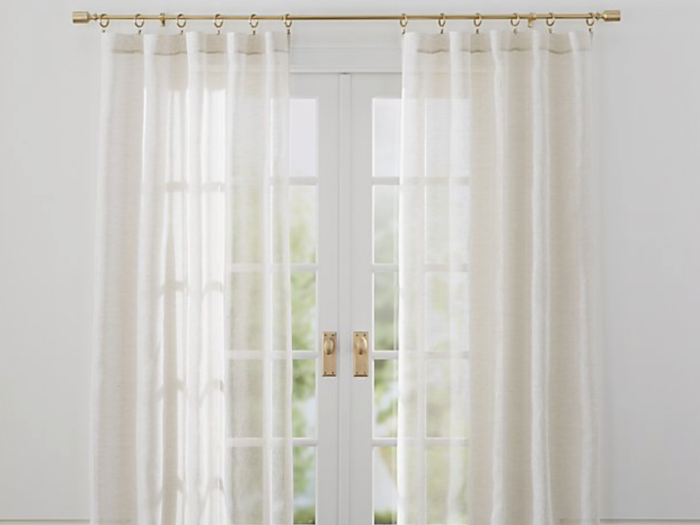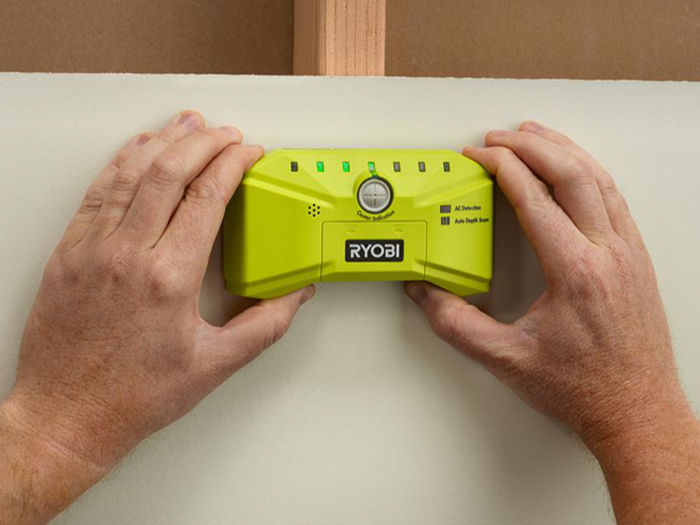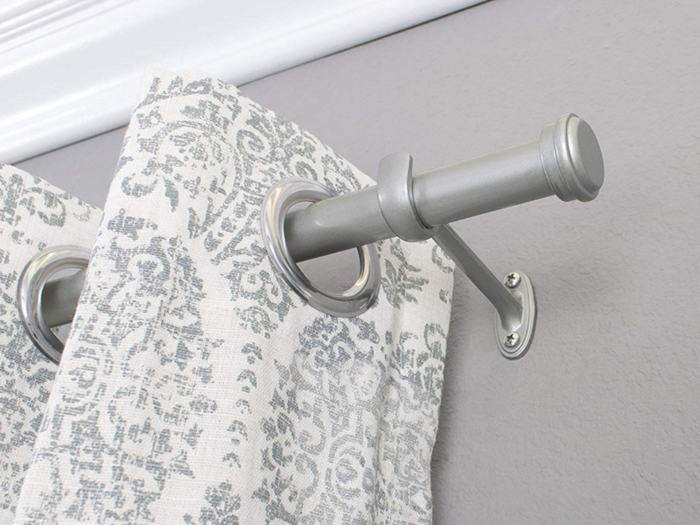- Home
- slideshows
- miscellaneous
- How to hang curtains, and all the tools you need to do it
How to hang curtains, and all the tools you need to do it
Step 1: Measure

Step 2: Pick out curtains, rods, and hardware

Now that you know how long and wide your curtains need to be, you can start shopping! Consider why you're hanging curtains in the first place: Is it to block light or let it in? Do you want to add some color, texture, or pattern to an otherwise muted design scheme, or are you trying to keep your window treatments neutral?
"In a living room, you want to feel comfortable and relaxed, so we recommend a light-filtering fabric like cotton voile, organza, or linen," Gatts suggests. "In other spaces, you may want denser, woven fabrics (like chevron stripes or herringbone patterns) to add weight and structure to the room."
Gatts also encourages her clients to mix patterns and textures throughout a space, but to keep the color palette cohesive. "You can always bring in bits of the colors or textures from your drapes into the rest of your space with throw pillows, art, and accessories," she adds.
Rods are available in many styles as well, from different metal finishes to wood designs and various lengths and sizes. The basic parts of a curtain rod are the rod itself, the finials (or end caps) brackets, and rings or hooks.
Depending on what material you choose and what style you like, make sure that you have all the elements you need to hang the curtains. To make it easier, many retailers will suggest rods that work with the style of curtain you are browsing, but if you're in doubt you should connect with a customer service agent or a professional designer.
"Our go-to solution for picking out drapery hardware is to find a metal or wood finish that is repeated throughout the space," Gatts explains. In terms of design, she notes that "straighter lines give a more tailored or understated look, while rounded edges keep things soft and slightly whimsical."
Stores like Pottery Barn, Bed Bath & Beyond and West Elm will have standard size curtains, but other retailers like Home Depot have lengths that you must hem yourself, so pay careful attention to the descriptions and measurements when you're shopping. If in doubt, go long: You can always shorten curtains but you can't add length. And if you don't see your dream design, you can always opt for a custom curtain designer, like Holloway Bay or Mesken.
Read our full guides to the best curtain rods and the best blackout curtains Shop for curtains at Pottery Barn, Bed Bath & Beyond, West Elm, and Home Depot Buy a set of linen curtains at Crate + Barrel for $39.95 to $69.95 Buy a set of chevron striped curtains at Target for $12.29Step 3: Install brackets

Once you have your materials it's time to put up the brackets. Mark the place where you'll drill holes for your brackets with a pencil.
Remember, this is at least 4 to 6 inches above the window frame and also about 4 inches on either side of the window frame so you can open your curtains fully.
Use the level to make sure your marks are even, and the stud finder to make sure your brackets line up with studs. Now you can drill your holes and screw the brackets into the wall.
Buy the DeWalt 20V MAX Cordless Compact Drill/Driver on Amazon for $99 Buy the Empire True Blue Professional Torpedo Level on Amazon for $9.97 Buy the Ryobi LED Whole Stud Detector at the Home Depot for $36.97Step 4: Install the curtains and rods

Most curtain rods have finials or ends, so the first thing to do is remove the finials from the rod. Attach your curtain to the pole, either by threading it through or tying it on and then place the rod in the brackets. Re-attach the finials to the rod and tighten the screws on the bracket to secure it in place. Now step back and admire your work!
Read our full guides to the best curtain rods and the best blackout curtainsPopular Right Now
Popular Keywords
Advertisement